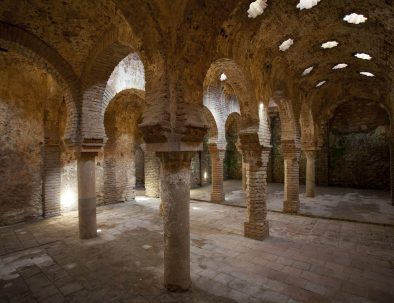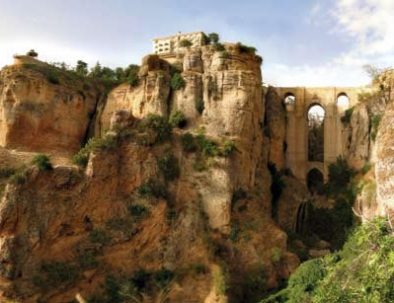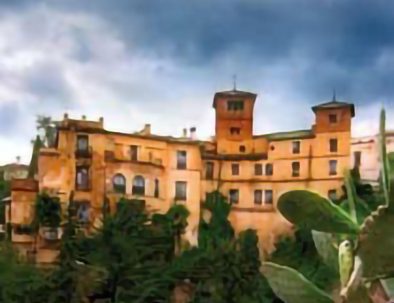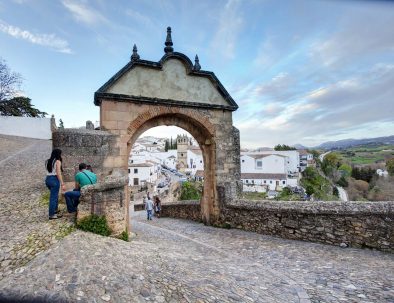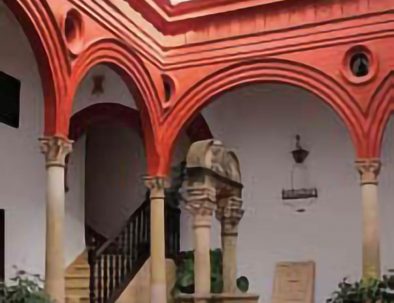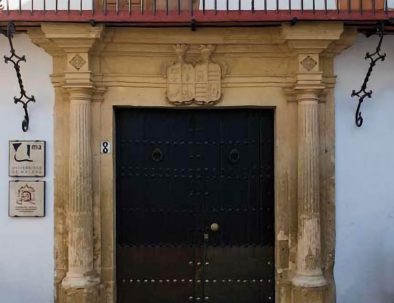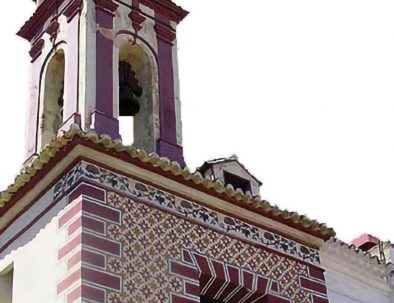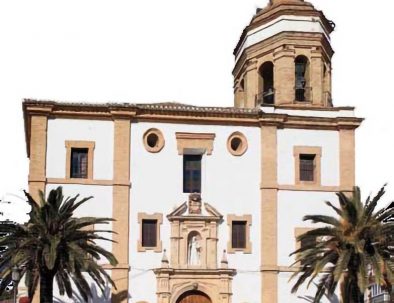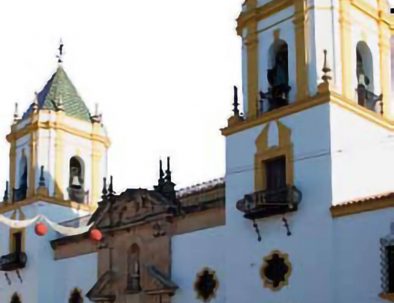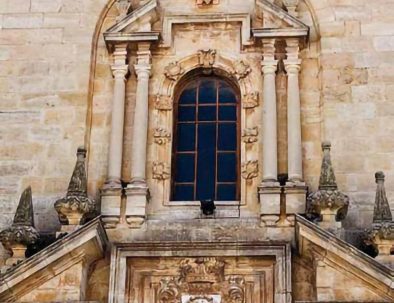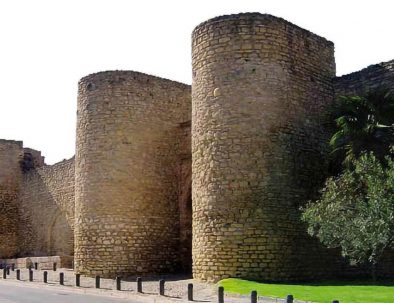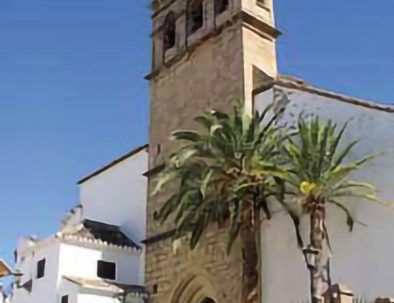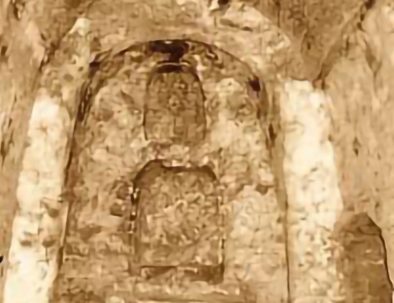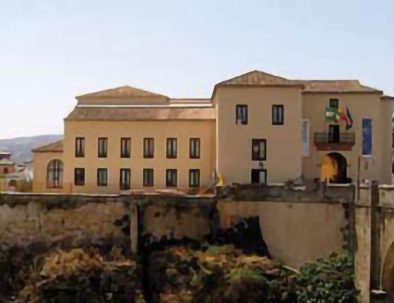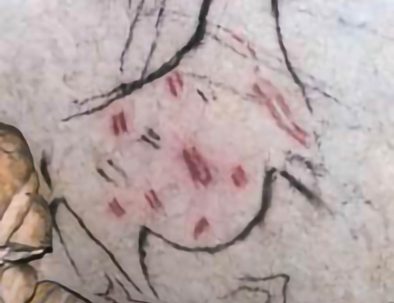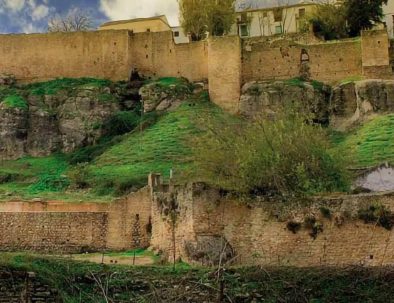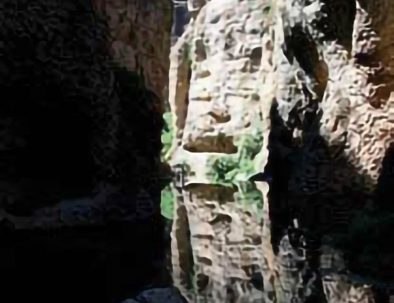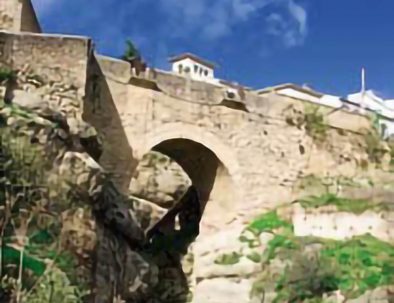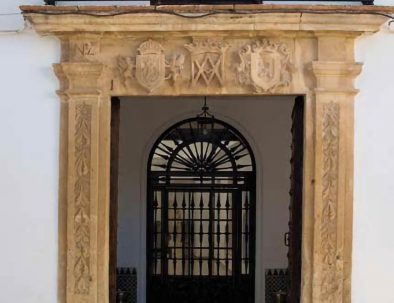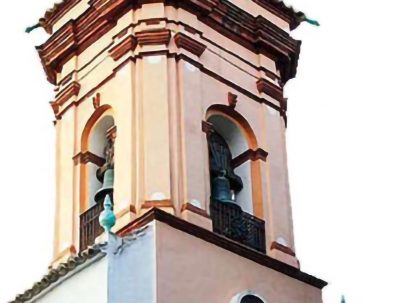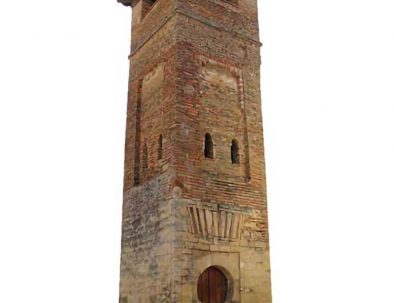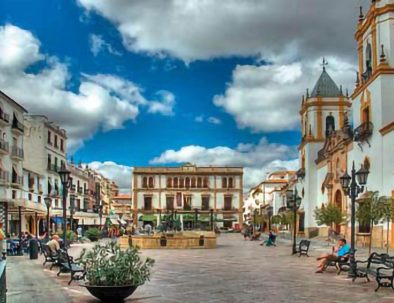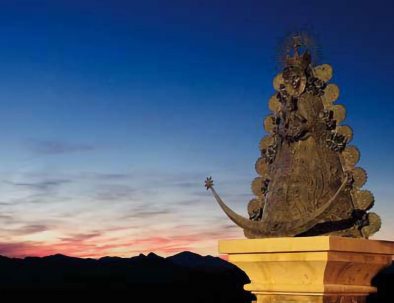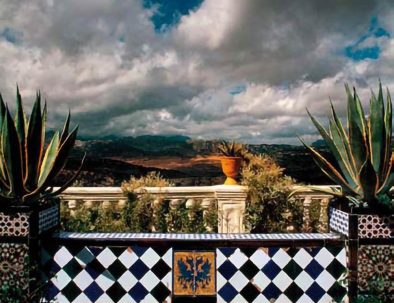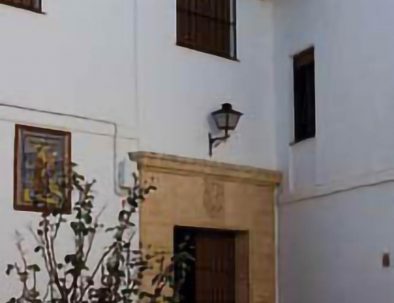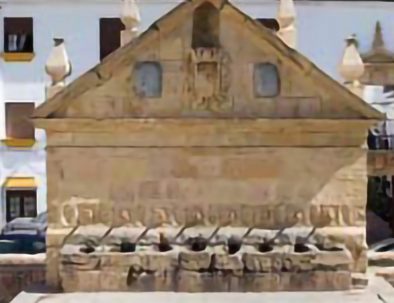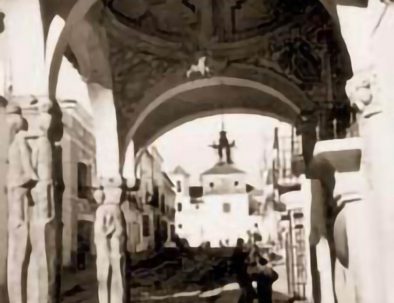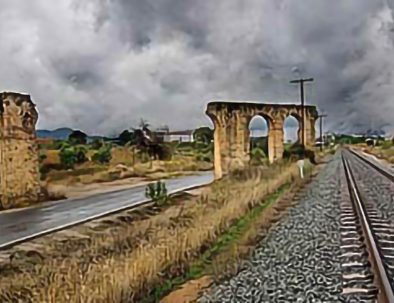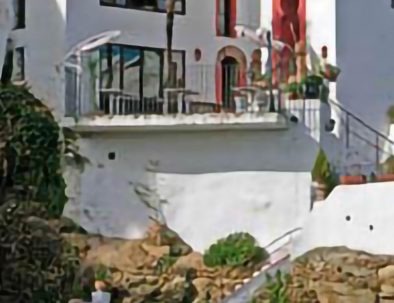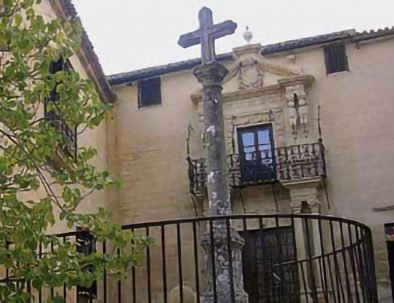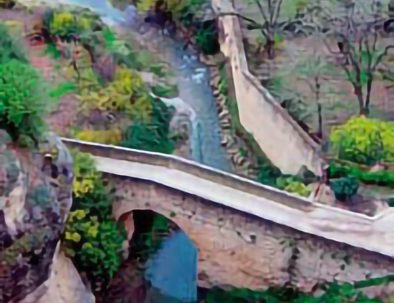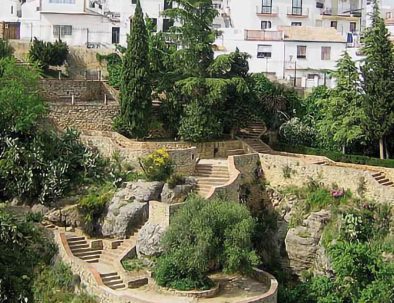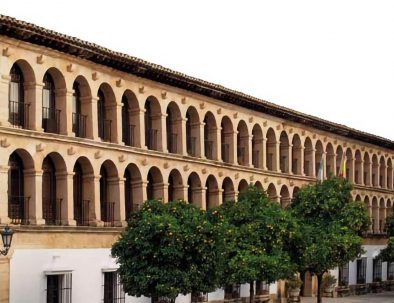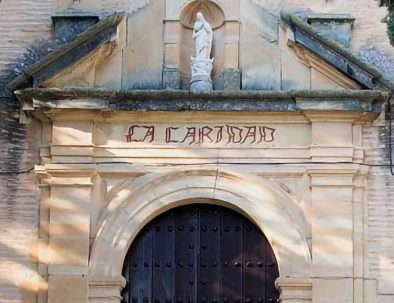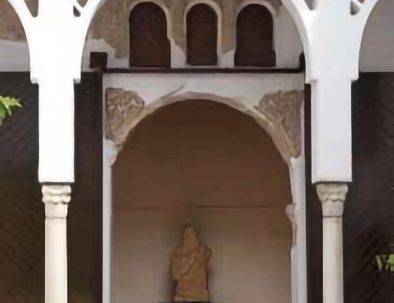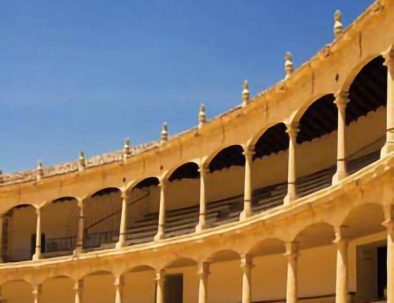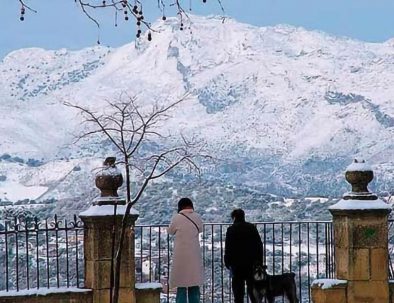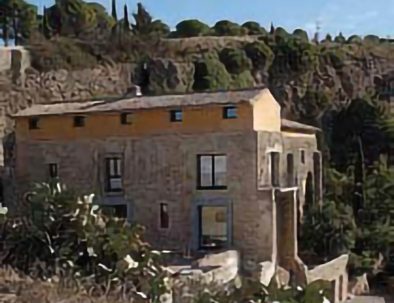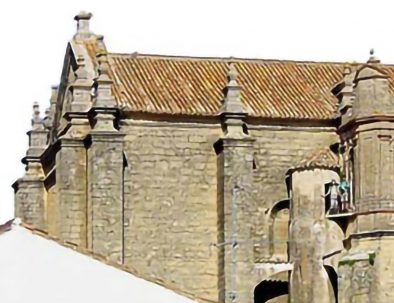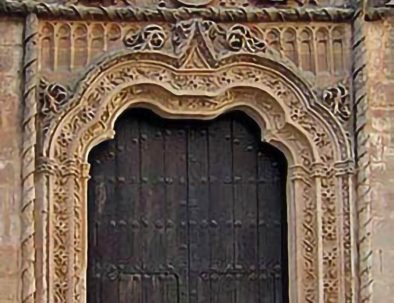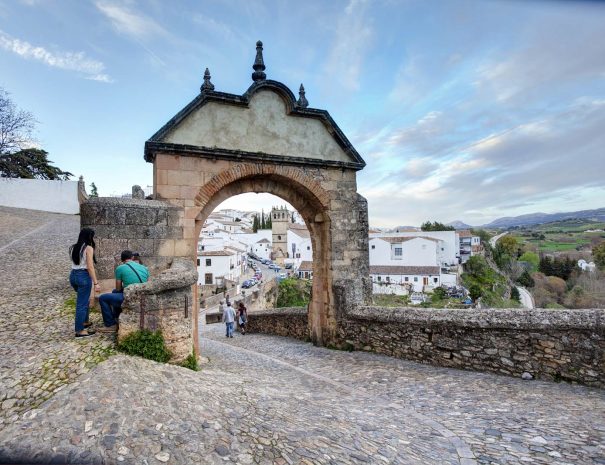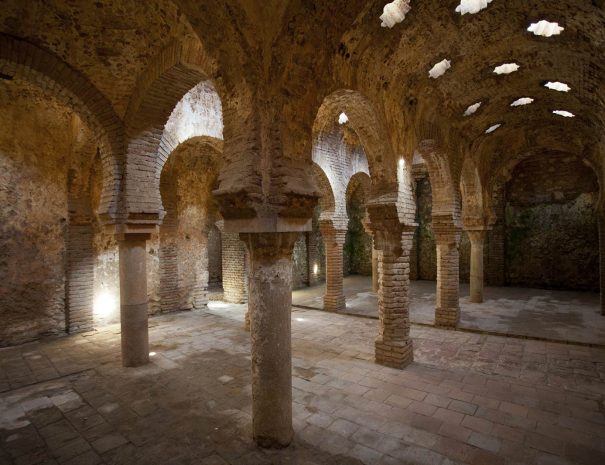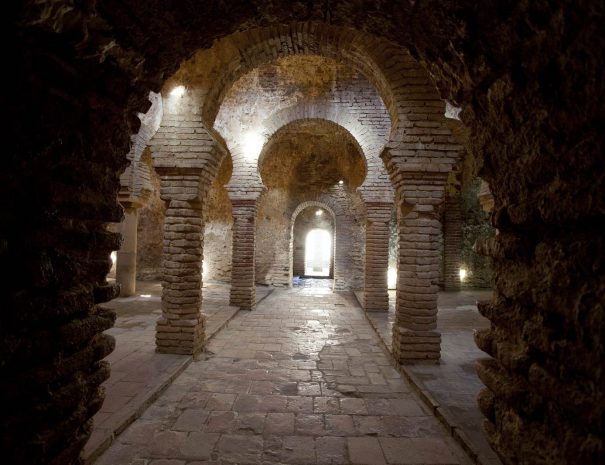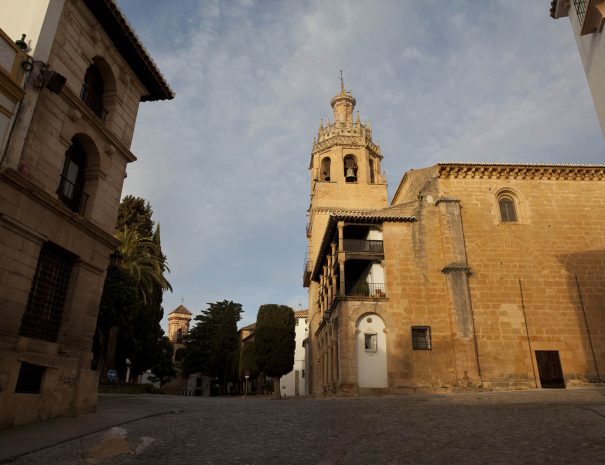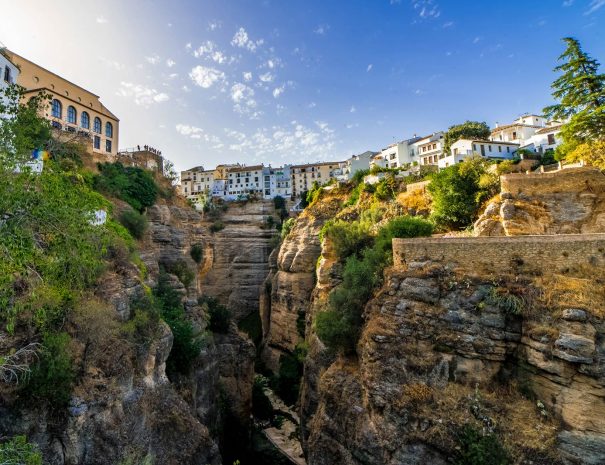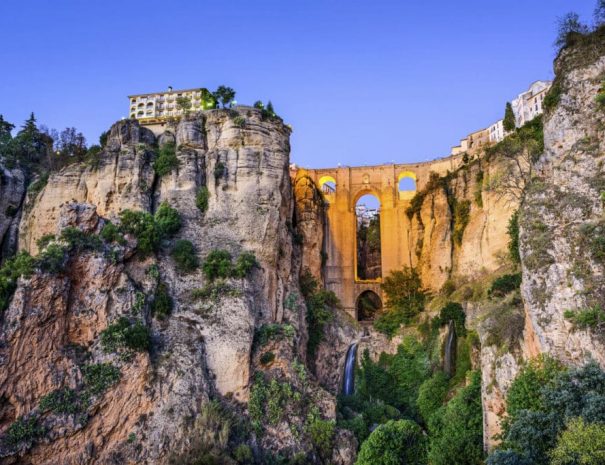The extension of this town covered the entirety of what is now the City neighborhood, reserving the lower areas for the establishment of artisanal infrastructures; Since then, the urban area has clearly been differentiated from the industrial area.
The highest terraces on the eastern slope are reserved for residential uses, establishing an orthogonal distribution system for this area of the city, which will no longer be altered until today. < / div>
Publio Cornelio Scipión arrives in the Iberian Peninsula, appointed Proconsul to definitively defeat the Carthaginians who seized the Hispanic territories after throwing out the Phoenicians out of them. The advance of Rome was unstoppable and after taking Astapa (Steppe), which resorted to collective suicide in order not to surrender to the Romans, Marcio with all his armies took all the cities of Baetica, among them Acinipo and Arunda. < / div>
The data from Roman times in our city (2nd centuries BC – 3rd AD) are scarce due to the fact that the archaeological landfill is very disturbed and affected due to the numerous graves and remonitions that have taken place throughout the history of our city due to subsequent constructions. At first there was a low degree of romanization, differing little from the previous stage, unlike what happened in neighboring Acinipo where there are indicators of strong romanization such as numismatics, theater, baths, etc. So this period could be called Iberian-Roman in its first two centuries.
Later around the castle, called Laurus, under its shadow, some other buildings of more or less magnitude and built by the settlers themselves came together. The residential area of the Roman Arunda was reduced to the highest and flattest part of the flat hill, occupied mainly by a wealthy class, according to the elements of social distinction that appeared in different archaeological interventions, and which it is deduced should also be of a great magnitude -forum, temples and some important buildings- for the infrastructures associated with them, on which the drinking water network that came from the Fuente de la Arena stands out, on the outskirts of the city at the foot of the Sierra de Jarastepar, a through an aqueduct that, together with the tower-siphon or columnar of the Predicatorio, are still preserved, and whose constructive characteristics and pressure conduction fully coincide with the description that Vetrubio makes for this type of infrastructure. This aqueduct supplied the city of Ronda with water for many centuries.
The Roman city of Arunda would be defined in the current urban topography by the triangle between the Plaza del Gigante, Plaza Duquesa de Parcent and Calle Armiñán, probably in Flavian times, coinciding with the extension of the municipality developed by Vespasian and culminated by Domitian (last quarter of the 1st century BC).
With the election of Octavian as emperor of Rome (38 BC) it is believed that a beautiful temple to Julius Divo was erected, according to a tombstone which was found in the old wall or door of the church of Santa María la Mayor, although it is not archaeologically proven.
From the third century (AD) the urban area of Ronda was transformed, producing a change in functionality in urban and public spaces that will be occupied by necropolis or other facilities private or ideological, such as the remains of a Paleo-Christian Basilica and burials next to the church of Santa María la Mayor. Then what archaeologists call the disintegration of the ancient city of Arunda takes place, which becomes part of a new model of folding where the rural and the private replace the public and social. Although precisely the existence of elements linked to religion will keep the settlement, although reduced, for a later resurgence in medieval times.
Mention must also be made of the celebration of the First Christian Council of Spain that is held in Illibiris (Elvira, a town that existed near Granada in the mountains today called Elvira, where find its ruins), in the 4th century, where the priests Leo and Januario attended, representing Acinipo and Laurus respectively.
Visigothic period
From this time there are only archaeological data from the aforementioned Paleochristian Basilica , in a space adjacent to the Iglesia Mayor (C / San Juan Bosco).
In tomb number 8, a Visigothic triente appeared as part of the trousseau with the legend Egica Rex on the front and Witiza Rex on the back. Its date is between 698 and 702. Although, at this time, a small fortified city continued to exist around its castle under the command of a Comes (later called Counts, who served as governors).
The Serranía de Ronda, around the year 672 with the arrival of Wamba to power, became one of the main areas to monitor the coasts and the A threat that came from Africa, but the Berbers managed to reach the peninsula in 711 when Witiza’s children request help to dethrone King Rodrigo.
Muslim era
The Muslim conquest , let’s call it that to understand us, as of 711, it will inaugurate a great period for Ronda, becoming an impregnable bulwark until 1485 It will be, along with its Serranía, a neuralgic point, a key area in the military balance of the time. Its strategic location and its inaccessible location will be essential factors that explain the capitality and centrality that our city acquires in a wide territory of influence, making it one of the most important and populated in Andalusia between those centuries.
In the early days of the Muslim conquest , Ronda barely underwent changes compared to previous stages, a certain situation of abandonment continued to be experienced with respect to that ancient Roman city, it was a strategic place that had become a good refuge for its Hispano-Roman inhabitants.
At the same time the settlement of Berber groups takes place in the Serranía, where their population must have been very important if we take into account the abundance of place names that reveal their origin, especially in what was called the heart of Takarunna. The Berbers bring with them their ancient settlement patterns: dispersed rural habitat, in a harsh climate zone, organized into small tribal entities and fiercely independent.
There is no certainty of when Ronda was conquered by the Muslims, some chroniclers narrate that when Tariq was heading towards Écija he divided his army into three corps, one of the three a the orders of Zaide ben Kesadi went to the regions of the current province of Malaga, in which it could be deduced that Ronda would be, which tenaciously resists him, and shelters the losers. The rugged and rugged mountain ranges that form the Serranía offer momentary asylum to the dispersed. Levi Provençal records that the Berber chief Zaide ben Kesadi al Sabsaki seized, in August 711, the fortress from which Izn-Rand Onda would emerge, the city of the castle, which would soon be an effective link with Gibraltar, capable of ensure communication of the invading leader Tariq with Mûsa, promoter of the company. According to the archbishop Don Rodrigo (13th century) the small but very strong city of Ronda, built on the depopulated Laurus, was surrounded by the troops of Abd al-Aziz, son of Mûsa, and resisted in a The siege began, sheltered by its walls, which welcomed hundreds of Christian Rondeños determined to lose their lives, not without its governor, Comes Altfuns, an ancestor of the famous Omar Ben Hafsun, stipulating a dignified and honorable surrender, extending very solemn commitments , leaving their neighbors the possession of their homes and the guard of their religion and their cults, resulting more as allies than as defeated. Mûsa’s son is succeeded by a series of governors in some really troubled years. With Al-Hurr (716), the conquered mountain lands were redistributed in favor of the Arab families (Yemenites and Caisites) to the detriment of the Berbers. Governor Uqba (734-741) establishes independent judges of the military leaders, setting the seat of one of them in Ronda. Later (around 744) part of the Arabs who came from Palestine also dwelt in our territory, whose picturesque valleys, ravines and banks reminded them of the narrowness of Lebanon or the delicious slopes of Carmel. There is a series of Berber uprisings , motivated by the discrimination that this ethnic group had suffered from the Arabs.
And at the same time, what is called Islamization of our lands begins to take place, a gradual phenomenon of centuries-long duration, whose initial extremely reduced speed and extension were growing with over time, and it was not consolidated until the arrival of the Caliphate of Abderramán III, where our city became a center of attraction for a dispersed population, and a policy of integration of the notables of the area in the Cordovan administration by the Califa himself, who transferred them to the capital of the Caliphate to form part of his administrative cadres. A practice that had already started previously in the time of Abderramán II, with the aim of ending the social conflict in Takurunna, integrating its most prominent men into the structures of state power.
From this period (IX-X) are the two most interesting Mozarabic cave churches in the province of Malaga, Santa María de la Cabeza and la Oscuridad , on the outskirts of what was the urban area, who maintained Christian worship in these parts.
The arrival of Berber groups did not stop throughout the Umayyad period. A significant influx of North Africans occurred during the government of al-Hakam II. Among the groups that penetrated into al-Andalus, the Banû Ifran went to the heart of Takurunna, and founded a Taifa kingdom in the 11th century, having Ronda as its capital, thus increasing its historical importance.
Years later, our territory was annexed to the Kingdom of Seville by the Abbadí Mutahdhid, after the murder of the Ronda emir Abü Nasr, son of Abü Nur .. He was succeeded by his son Mutahmid , known as the “poet king”, who calls Ronda as: “the most flowery flower of my crown”.
The settlement of Ronda at this time will cover almost the entire hill and other areas such as the San Miguel neighborhood will begin to be occupied, as it is an obligatory entry point to the city and the area where incipiently, artisanal and industrial activities were being installed. It is around this time that the first bridge was built, that of the Tanneries.
It is from the twelfth century that an important transformation will take place in the city, through new large-scale constructions and expansion itself of its settlement with the creation of its two suburbs that have been called, according to the time, in various ways: Low or High, Old and New or San Miguel and the Holy Spirit, both outside the medina or Islamic city that is located on the hill around the castle. In the first of them were the artisanal and industrial facilities, where the main baths will also be located. This neighborhood, also called Las Mancebías or Bajo or Las Curtidurías was located between the walls of La Cíjara and the walls of the Baths and was an obligatory step, as we have said, to enter Ronda from Granada or Malaga, through the Puerta de la Puente, disappeared in the 20th century . These types of activities such as tanning or pottery were located there due to the proximity of the river, since for this work water was needed and evacuated as well, since due to its pestilence they had to be away from the population.
The outside population settled in the second suburb, and crossing its walls was the Islamic cemetery (Puerta de Almocábar or the Cemetery), on the land that today occupies the neighborhood of San Francisco.
In the medina the spaces around the Aljama Mosque (today Santa María la Mayor), the alhóndiga and the citadel will be planned, consolidating towards the East the houses of the ruling class and more affluent (such as the Casa del Gigante, Palacio de Mondragón or the Casa de la Plaza Sor Ángela de la Cruz). It is when the settlement is traced that has practically reached our days and that are still largely appreciable.
At the end of the 13th century the city was dominated by the influential Banû al-Hakim family, who once again declared it independent.
The Medina of Ronda was consolidated in the Almohad period , but the great impulse as a city occurred in the Nasrid period (13th century). XV), since our city becomes the westernmost bulwark between the borders of the Kingdoms of Granada and Castile, enjoying a certain autonomy under the Banû Marín protectorate. It is when the suburbs are fortified, the wall of the Albacara is built, which defends the access to the mills, and probably the entire walled enclosure of the medina is reformed.
At the beginning of the 14th century the son of the king of Fez, Abomelic , landed with a formidable army, who in return For the help he received against the attacks by the Christian army of Alfonso XI , he was entitled from the first moment King of Ronda and Algeciras. But he died in 1338 at the hands of the Jerez soldier from Alfonso XI’s own army, Diego Fernández Herrera.
It is at this time when countless cisterns and pools are built to supply the city with water, and the staircase that allowed the water to rise to the Medina was carved into the rock of the Tagus , during the long sieges, of the spring of the Mine that flowed in the same bed of the river.
Castilian Conquest
In 1407 , Zahara falls into Castilian hands, one of the vital fortresses on the border within the defensive system of the Comarca Rondeña. Later reconquered again by the Nasrids and definitively lost in 1483, this is followed by the occupation of Alora, then Alozaina in 1484, and a year later Coín and Cártama. In this way, the fall of Ronda was a matter of a short time.
The Castilian Conquest will greatly affect the city of Ronda, since the beginning of this new historical stage also means the transition from medieval to modernity.
Due to the strategic and political situation of Ronda in the Nasrid kingdom, it is a place highly desired by Castilians, who consider it a key point for the subsequent fall of the Nasrid Muslims. Ronda was undoubtedly the most coveted jewel in the Kingdom of Granada.
Its conquest required careful planning and the use of a military stratagem that could mislead the Muslim rondeños, who were known for their excellent warrior skills and for being well defended and protected. who had their city, aware of Castilian greed for centuries.
The Catholic Monarchs set out for Andalusia, to spend the winter there and study, together with their nobility, the strategy of a new summer campaign of conquests in 1485. They were considering two possibilities: occupying Ronda and Málaga, deciding in favor of the latter as it had greater economic interest, and also thinking that if they conquered the Malaga region, Ronda would be isolated, since the area of Setenil and Zahara was controlled by the Marquis. from Cádiz. They begin their tactic by entering Antequera, in April, towards the Malaga basin and take Coín, Cártama and other towns in the area, but since Malaga’s defense is very fierce, they decide to attack their second objective, Ronda. To carry out this new plan, they make an attempt to raid Loja, which forces Hammed el Cegrí and other warriors from Alcalá and Medina Sidonia out of Ronda, who come to their defense. King Fernando and Ponce de León (Marqués de Cádiz) march rapidly towards Ronda, catching the Nasrid people off guard and bewildered. The Christians surround the city, establishing their royals and artillery around it. The taking of the Mine leaves the city without water supply. After a few weeks of siege, the city fell on Sunday, May 22, 1485, the day of the Holy Spirit.
The famous octagonal tower that some historians place next to the main mosque, where the Church of the Holy Spirit was later built, according to recent archaeological discoveries. in the corner of the Cuesta de las Imágenes, where remains of the foundations of the large solid construction with a probably circular plan appeared.
Ronda’s Muslims are expelled from their homes and their fields are also taken away. Ronda together with Marbella need to be repopulated as soon as possible, since Granada has not yet been conquered and the Nasrid threat to reconquer our territory continues.
This is why with unusual rapidity the spoils of the conquered lands and houses are distributed, a commission that the Kings make to Juan de Torres, whose work will be highly questioned when it becomes in a careless and self-serving manner; Therefore, in 1491, the bachelor Serrano was commissioned to restart the entire distribution process, who will grant the new settlers and conquerors all the lands and houses, endowing the city with Own and Commons (ejidos and dehesas) and creating new spaces for the settlement. Everything that was done in the ordination is collected in an exceptional document of great historical value that is preserved in our Historical Archive: El Libro de los Repartimientos.
Although initially the medina would not undergo major changes compared to the previous era, it is from modern times that our city expands the most and its morphology changes. .
Most of the Muslim houses were small and endowed with a series of dependencies related to the lives of their inhabitants, mainly peasants. In the Repartimiento many of these houses are granted to the new owners in groups of two, three and even six.
At first there were not too many Castilian settlers, because many of the beneficiaries were royal and military servants who were still in a conquering campaign. As the conquest of the Kingdom of Granada consolidates, the situation changes as many decide to come to settle in the new territories annexed to Castile. Although this process of repopulation and the subsequent expulsion of the Moors decimated the population quite a bit.
The Moorish uprising, 1501, occurs when the promises of tolerance for their faith and customs agreed with the Catholic Monarchs, promises that they had been respecting Archbishop Talavera, but Cardinal Cisneros does not comply. The fight is fierce in the Serranía, and in Sierra Bermeja the elder brother of the Great Captain dies in battle. To appease the insurrection, King Ferdinand went to Ronda again, where he once again established his headquarters.
Of the importance given to Ronda by the Castilian royalty, the fact that all their domains and lands were awarded as Lordship to the crown prince Don Juan, who When he died, he left it to his wife, and the latter, after his return to Flanders, gave him back to the Crown.
After the battle of Ronda , its walls and houses suffered significant damage due to the use of artillery, which the Castilians used with profusion. To alleviate the damage, the construction of new buildings, especially of a religious nature, is ordered by the express wish of the Catholic Monarchs. The Medina of Ronda and its suburbs will be divided into six collations, all of them located on lots that used to be occupied by old mosques; of the six, two of them have survived to this day: Santa María de la Encarnación, Espíritu Santo, and the disappeared ones of Santiago, San Juan Bautista, San Juan Evangelista and San Sebastián (from which the minaret or minaret that was later used as a bell tower). A hospital is also being built, the one in Santa Bárbara, incomprehensibly demolished in the eighties.
Each of the complementary spaces or neighborhoods that were formed in the previous stage are disintegrating and evolving unevenly, this even supposes the abandonment and disappearance of the lower suburb or of San Miguel, because the wall was never rebuilt and because it is no longer a forced passage for those who arrived in Ronda, since a new entrance opens through what we know today as the Old Bridge. Little by little it is intended to give the medina the character of a Castilian city.
16th and 17th century
With the arrival to the throne of
Carlos I , the Communities of Castile rose, but Ronda signed with other Andalusian cities the so-called
Pact of Las Ramblas , in favor of the Emperor, is when he exclaims:
“Oh, faithful and strong Ronda!” , which will later be incorporated as a legend to the city’s coat of arms.
It is throughout the 16th century that a radical change takes place in Ronda’s society, a process that culminates in the expulsion of the Moors in the lands of Ronda in 1572 . We went from a Muslim society to a Christian society.
In the 16th century is when the expansion of the city takes place, and the neighborhood of Mercadillo or ejido de la Puente is founded (what today we call the neighborhood of Padre Jesús), the name comes from the concentration of merchants that existed outside this part of the city and it is when 1518 the church consecrated to Santa Cecilia was founded (name by which also this neighborhood of the city is called).
In 1542 a new bridge was built that would make the entrance to the city lighter. It is around this time that the Madre de Dios and Trinitarios Calzados Convent (now defunct) was built . And a wide street that will be the main access to Ronda between the 16th and 17th centuries, it is Calle Real.
In addition to the Market, a new neighborhood was created to the south, where the old Muslim cemetery was located, originally known as the Fuente de la Arena and later as San Francisco because the Convent of the same name was located there, where the site of King Ferdinand in the conquest of Ronda was. In the current square there was a pasture that the dealer Serrano donated to the city so that the exercises and equestrian games of the cavalry could be carried out there, which is why it was called Prado de los Caballos or de los Potros. Immediately after the conquest, the first Christian hermitage was built, with the name of the Ascension or the Visitation, but when the square (Ruedo Alameda) was configured, it was moved to one side, becoming called Virgen de Gracia, today practically disappeared. Also in this area the merchants proliferated who, being outside the walls, did not pay the alcabalas with the products that entered the city were taxed.
The Real Maestranza de Caballería de Ronda
From the Middle Ages , the leadership of armies and the service of arms were tasks carried out by the nobility. In the military and political history of Spain, in addition to the military orders, the brotherhoods, maestranzas and other cavalry corps, institutes promoted by the Crown with the intention that the local nobility exercised in the use of the cavalry and weapons, in order to be able to respond immediately to the King’s call and intervene where necessary.
The Crown strongly recommended that knights exercise for war by holding tournaments, games of rods, piggy banks, rings, and spearing fighting bulls. The confrontation with the bull was part of the equestrian training as well as being a popular spectacle. On the other hand, the Crown encouraged knights to strive to breed “good horses for the guard and defense of the Kingdom”.
Although the advance of the Europe of the nations brought with it the formation of armies financed and directed by the state, the military body of the Real Maestranza de Ronda did not completely abandon its preparation for war. Once its historical commitment to the army concluded, the Maestranza rondeña continued to maintain its riding school and oriented its activities towards culture and charity.
Throughout, then, centuries, the teachers of Ronda did not stop facing bulls, spearing them and «even fighting on foot, face to face, and strike down the animal with blows. ‘ This centennial game with the bull has been the background from which, in Ronda, a stately and popular bullfighting capable of giving way to modern bullfighting on foot was able to nourish itself. The extraordinary fact that the two most important bullfighting dynasties of their time were born in Ronda –the Romero and the Ordóñez– would not be understood without the existence of an institution such as the Real Maestranza de Caballería de Ronda.
Century XVIII
The 18th century begins with the taking of Gibraltar by the Anglo-Dutch squad in 1704 . This fact determined that our city acquired the status of stronghold in front of Gibraltar, and begins to have important military garrisons, as is the case of the Provincial Militia Regiment, for which a barracks was built in 1734 (today the town hall).
Ronda’s society at this time was made up of the nobility, the clergy and the peasantry. Ronda was an eminently agrarian city , although some industries such as the Royal Tin Factory (Júzcar) and the Royal Balería Factory (Jimena de la Frontera) had been built in its territories.
The nobility and clergy grabbed the best land and controlled much of the farm income through manor rights and tithes. On the other hand, the former exercised a monopoly on the positions of government in the city, with the advantages that this brought to them of managing the rents and arbitrarily interpreting the Ordinances.
The peasantry was made up of small and medium-sized owners, tenants, sharecroppers and mainly day laborers. From this agrarian society a new social group was born throughout the XVIII whose income does not depend directly on the countryside, they are manufacturers, artisans, merchants, military … those who make up the bourgeoisie, who with over the years they will reach local power.
It is in this century when the New Bridge, the Plaza de Toros, the Alameda del Tajo and the Aqueduct of La Hidalga were built. The construction of the Bridge allows the expansion of the city through its Ejido, drawing new streets by string in the absence of previous constructions, the Plaza Nueva (today in Spain) is created, where the alhóndiga, the butcher shop and various grocery stores, and Calle San Carlos (today Virgen de la Paz) which leads to the La Merced convent. This monumental Bridge was the factor that led to the birth of a new city, with a modern grid layout, in opposition to the Islamic Ronda of winding, narrow and functional streets.
XIX century
This is a regressive era for the city of Ronda, since the occupation of the city by the French ruined the economy, causing hunger and misery among the people of Ronda. They also devastated the walls, roads, aqueducts and important buildings such as the Castle. To this destruction must be added political instability and conflict. The Ronda panorama in this century was not very encouraging, there was a state of generalized poverty that lasted until the end of the century. It is when the phenomenon of banditry appears that so much inspirational romance provided romantic travelers .
There was hardly any major work done in most of this period. It is only worth highlighting the
construction of the new Town Hall in the current Plaza de España (today Parador de Turismo). But the restlessness of the new bourgeoisie, made up of merchants, landowners, industrialists and the old nobility, through of the City Council, an institution that replaced the old perpetual councilors, promoted a series of projects so that Ronda would not be left behind by new technological advances, undertaking a series of works that would notably improve the city’s facilities and its public services. < / div>
After several projects and attempts throughout the century to restore the water supply through the destroyed Aqueduct of La Hidalga by the French , and before the desperate situation that existed since the water carriers collected the waters in poor condition from an excavation made between the confluences of the Guadalevín river and the Culebras stream, the then mayor of the city D. José Jaudenes made the decision to privatize the public water supply, calling for a tender on May 30, 1875, and the tender for which was awarded to a French engineer Carlos Lamiable. This character, whose interventions would later be transcendental for our city, with his Water Company, acquired the commitment to bring water from the springs of La Hidalga, Coca and Fuente de la Arena a flow of 2,500 cubic meters per day, to sell them at 6 cents of real per arroba, in exchange for carrying out all the works of pipes, tanks, fountains, troughs and laundries within a maximum period of five years.
In December 1876 the first phase from Arroyo Perdiguero (Fuente de la Arena) had already been concluded, but the next from La Hidalga and Coca It was not concluded because the businessman was involved in other works, such as the railway, and neglected it, which triggered a long conflict since the flow was insufficient. This problem was not solved until the next century.
It is this century too, in 1889 , when electricity reaches our city , whose concession was awarded to another engineer French Don Carlos de Courteille who gave his rights to Don Carlos de la Cuadra y Viteri. The latter, with his Electric Light Company, undertook to install a turbine in the area of the Tagus Mills that would move two dynamos that would generate electricity for 500 lights at 97 volts and 225 amps each, this installation would be complemented with a station at steam in the Campillo area. But the river flow was insufficient and the light that reached the lamps was barely that of a red-hot iron. A long conflict arose again, which ended with the withdrawal of the concession that was later awarded to D. Camilo Granados, who installed the San Miguel Power Plant in the Tagus and completed production with a boiler, steam engine and dynamo in about land donated by the City Council near the Plaza de Toros (today Paseo Blas Infante).
At the end of the century the works for the arrival of the railway also began, not without first overcoming many notable obstacles , since the project contemplated in the General Plan of State Railways was to connect Algeciras, either from Cádiz or Malaga, but as the historian D. Pedro Sierra de Cózar tells us, the unbreakable will of the town of Ronda, the actions of the Deputies to the Cortes for the Region (Lorenzo Borrego, Pedro Nolasco Aurioles and others) and the technical and negotiation capacity of Mr. Carlos Lamiable, obtained the modification of said Plan and the approval of the project by Law of June 12, 1980. The Construction of the railway line was awarded to the English company “The Algeciras Railway Co. Ltd.”, and the first train arrived in Ronda on September 7, 1891.
Twentieth century
At the beginning of this century, the poverty situation hit rock bottom, a problem that was then extended to all of Andalusia, due to the dilapidated state of the agricultural environment. The century began with a severe drought, 1905 , which wreaked havoc on the hungry population, causing conflicts and worker uprisings.
In Ronda, 1918 , the Andalusian Assembly was held, chaired by Blas Infante , who approved the symbols of Andalusia: the Flag, the Shield and the Motto.
In spite of the hardships, however in our city a new urban ordering takes place in the previous century that allows to eliminate the defects and irregularities of the old streets, of Islamic layout. majority, and a system of alignments is established that favors the appearance of modernist architecture , with the two architects, who held the municipal square, authors of these buildings: Pedro Alonso Gutiérrez (18th century and XIX) and Santiago Sanguinetti Gómez (XX century). The Ronda modernism as explained by the historian Emilia Garrido has clear dependencies on Belgian and French Art Nouveau and Secessionism, without forgetting the Catalan formation of Sanguinetti. This architect was the author of the precious and disappeared, demolition in the 70s, of the Espinel Theater, inaugurated in 1909, and that without a doubt has been the most serious attack committed against a building of great artistic value in our city.
With the arrival of the Republic there were turbulent years and great instability in the municipal government. Ronda’s society was clearly divided between bourgeois (merchants, landowners and industrialists) and workers (workers and peasants). The parties, called democratic, were not up to the task either. With the military uprising of 36, workers groups wanted to take advantage of this situation for the elimination of any form of State and the establishment of a true libertarian communism, this caused the burning of convents and churches, the arrest and execution of a very important number of Ronda residents. considered bourgeois and not adept at the Republic. The entry of Franco’s troops on September 16, 1936 did not change things much, there was a significant exodus of people from Ronda, who fled out of fear. The victors of the Civil War were implacable with the defeated, a period of Military Tribunals, of Political Responsibilities, of Repression of Freemasonry and Communism opens. An era of involution begins and a solid culture of silence and fear, of a post-war period marked by poverty. Until the 1950s, Ronda did not begin to resurface thanks mainly to the implantation throughout the Andalusian territory of its Savings Bank and to the creation of some incipient industries, which on the other hand do not prevent the occurrence of a phenomenon that will leave the city and its towns exhausted: emigration, which becomes the the only way for many to get out of the calamity in which their lives had become. With the death of Franco, in 1975, and the establishment of a democratic regime, there is reconciliation, the return of exiles and emigrants and the economic take-off, although not the isolation that has been condemned for centuries Our city. Communications, even today, remain our great workhorse and our most important lack.
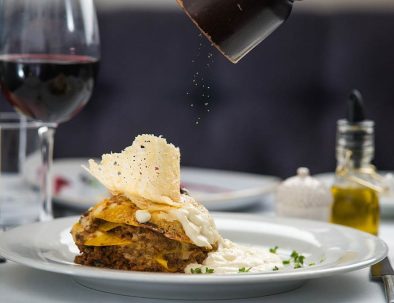

 But the oldest phase of human presence that until now has been found in the settlement of our city (old town) dates back to the Old Neolithic period (late 6th and early 5th millennium) , since the Archaeological investigations conclude that possibly at this time there was already a community in this place that occupied small shelters and caves that no longer exist.
Until the Copper Age (Full and Late, at the end of the III millennium and the beginning of the II), this area was not inhabited again, without the place being uninterruptedly vacated until today. Precisely from this cultural phase are the megalithic monuments in the vicinity of Ronda, such as the necropolis of La Planilla, with large corridor dolmens; dolmen del Chopo, Buendía, Encinas Borrachas, etc.
Corresponding to the Bronze Age a metal smelting furnace has been found in the area of the town (survey of the Mondragón square), which suggests that the extraction mines would be relatively close. The extension of the town would be of some importance, although it must be taken into account that for each small concentration of cabins there would be large spaces to be able to combine domestic tasks with those of grazing and crafts.
But the oldest phase of human presence that until now has been found in the settlement of our city (old town) dates back to the Old Neolithic period (late 6th and early 5th millennium) , since the Archaeological investigations conclude that possibly at this time there was already a community in this place that occupied small shelters and caves that no longer exist.
Until the Copper Age (Full and Late, at the end of the III millennium and the beginning of the II), this area was not inhabited again, without the place being uninterruptedly vacated until today. Precisely from this cultural phase are the megalithic monuments in the vicinity of Ronda, such as the necropolis of La Planilla, with large corridor dolmens; dolmen del Chopo, Buendía, Encinas Borrachas, etc.
Corresponding to the Bronze Age a metal smelting furnace has been found in the area of the town (survey of the Mondragón square), which suggests that the extraction mines would be relatively close. The extension of the town would be of some importance, although it must be taken into account that for each small concentration of cabins there would be large spaces to be able to combine domestic tasks with those of grazing and crafts.
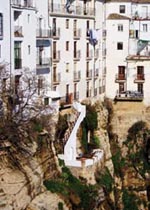 The old part , prior to the construction of the New Bridge, is called the City ; where the historic center of Ronda, the Roman Arunda and the Muslim Medina Runda are located. Surrounded by the gorge, walls and access gates, during the Middle Ages it became an impregnable city-fortress, capital of a wide territory populated by small towns and farmhouses. It is the romantic, aristocratic, conventual Ronda, steeped in history, with a thousand nooks and crannies that fill the soul with tranquility.
The old part , prior to the construction of the New Bridge, is called the City ; where the historic center of Ronda, the Roman Arunda and the Muslim Medina Runda are located. Surrounded by the gorge, walls and access gates, during the Middle Ages it became an impregnable city-fortress, capital of a wide territory populated by small towns and farmhouses. It is the romantic, aristocratic, conventual Ronda, steeped in history, with a thousand nooks and crannies that fill the soul with tranquility. 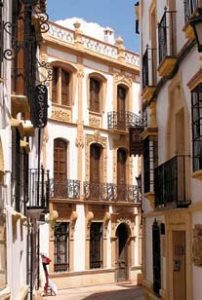 The modernist works of Pedro Alonso Gutiérrez are related to historicisms, Mudejar and Plateresque , in accordance with his Madrid training, with decorative details from international modernism (Secession or Viennese Modernism) .
The modernist works of Pedro Alonso Gutiérrez are related to historicisms, Mudejar and Plateresque , in accordance with his Madrid training, with decorative details from international modernism (Secession or Viennese Modernism) . 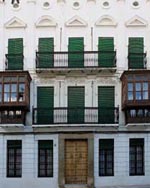 These houses are located in the City (historic center), where the type of large house dominates, with an emblazoned facade, made of stone, some of which date from the end of the 15th century or the beginning of the 16th, with a Gothic-Mudejar air. They are lintel doorways, of great simplicity, with shields in the center of the lintel and on top of it a barred window, later replaced by a balcony with an increasingly complicated profile.
These houses are located in the City (historic center), where the type of large house dominates, with an emblazoned facade, made of stone, some of which date from the end of the 15th century or the beginning of the 16th, with a Gothic-Mudejar air. They are lintel doorways, of great simplicity, with shields in the center of the lintel and on top of it a barred window, later replaced by a balcony with an increasingly complicated profile. 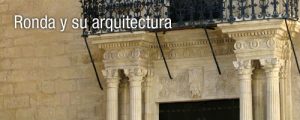 There are still whitewashed houses and streets with Moorish reminiscences in Ronda. Although the Ronda farmhouse in the old part has been very renovated, it preserves much of its Muslim past. Despite the transformations suffered over the centuries, some areas of Ronda are presented with a labyrinthine layout, usual in medieval cities.
There are still whitewashed houses and streets with Moorish reminiscences in Ronda. Although the Ronda farmhouse in the old part has been very renovated, it preserves much of its Muslim past. Despite the transformations suffered over the centuries, some areas of Ronda are presented with a labyrinthine layout, usual in medieval cities. 